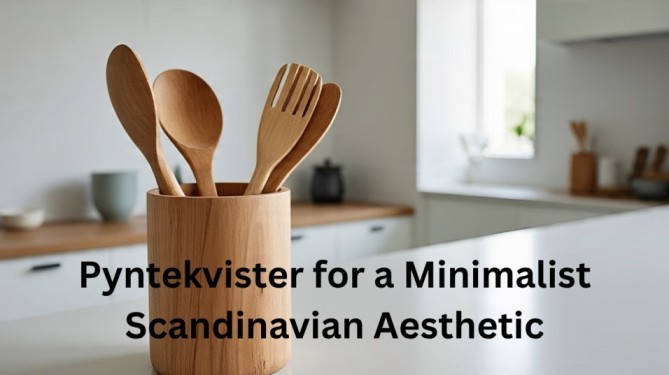The Scandinavian aesthetic, known for its simplicity, functionality, and connection to nature, has become a global design trend. A crucial but often understated element in achieving this look is the use of pyntekvister decorative twigs or branches that add organic texture and subtle visual interest. Incorporating pyntekvister into a minimalist space can elevate its ambiance without overwhelming the clean lines and muted color palette typical of Scandinavian interiors.
In this article, we’ll explore how to use pyntekvister for a minimalist Scandinavian aesthetic, analyze the key design considerations, and discuss the tradeoffs and challenges associated with various choices.
What Are Pyntekvister?
Pyntekvister are dried or fresh branches used for decorative purposes. Common types include willow, birch, eucalyptus, pussy willow, and cherry blossoms. These natural elements are typically displayed in neutral-colored vases or hung as wall décor to add height, structure, and an organic feel to the space.
Key Factors for Using Pyntekvister in Minimalist Spaces
1. Form and Simplicity
Minimalist Scandinavian design relies on simplicity, and pyntekvister fit seamlessly due to their clean, sculptural forms. However, the choice of branch type significantly affects the visual impact.
- Fine branches like birch twigs complement minimalist settings with their delicate structure.
- Heavier branches can overwhelm a small space or distract from a clean aesthetic.
Tradeoff: Using more dramatic branches creates focal points, but may compromise minimalism if not balanced carefully.
2. Natural Color Palette
Scandinavian interiors emphasize whites, grays, and soft beiges. Pyntekvister should mirror this palette or provide gentle contrast.
- Neutral-colored twigs (bleached or naturally pale) blend effortlessly.
- Darker or painted branches can be used sparingly to add visual interest.
Challenge: Introducing color through pyntekvister must be done with restraint to avoid visual clutter.
3. Material Choice: Real vs. Artificial
Choosing between real and artificial pyntekvister affects both aesthetics and maintenance.
- Real branches offer authenticity and texture but require occasional replacement and care (especially fresh cut).
- Artificial branches are low maintenance but can appear less organic or overly uniform.
Balance Point: For purists who value sustainability and authenticity, real branches are ideal. However, artificial ones can be practical in low-light or hard-to-reach areas.
4. Placement and Arrangement
Strategic placement is essential to maintain a sense of openness and airiness:
- Use single branches in slim vases on coffee tables, nightstands, or shelves.
- Create vertical arrangements near entryways or corners to draw the eye upward.
- Group pyntekvister in odd numbers for asymmetrical balance.
Tip: Avoid overfilling vases or cluttering multiple spaces less is more.
Challenges When Incorporating Pyntekvister
⚠️ Overdecorating
Too many pyntekvister, especially in a small room, can make the space feel busy. The minimalist aesthetic requires strict editing.
⚠️ Mismatch with Existing Decor
Highly stylized or colorful interiors might clash with the natural, subdued look of pyntekvister unless they’re purposefully contrasted.
⚠️ Environmental Considerations
Harvesting natural branches can have environmental implications if not done sustainably. Recycled or responsibly sourced options are preferable.
Tradeoffs and Design Decisions
Achieving harmony between aesthetics, practicality, and sustainability is a recurring theme in Scandinavian design. With pyntekvister, you’re often balancing:
- Artistic expression vs. functional simplicity
- Visual warmth vs. minimalist coolness
- Natural imperfection vs. clean uniformity
Understanding your design priorities—whether they lean more toward practicality or authenticity—can guide these decisions.
Final Thoughts
Using pyntekvister for a minimalist Scandinavian aesthetic is about more than just decoration. It’s a thoughtful practice of enhancing space with nature-inspired elements that evoke calm, balance, and subtle beauty. The key lies in restraint, mindful placement, and an understanding of the materials used.
Whether you prefer the authenticity of real twigs or the convenience of artificial replicas, pyntekvister can help you shape interiors that are both visually appealing and true to Scandinavian principles.

